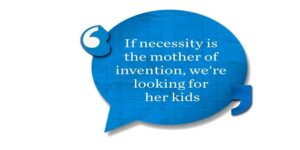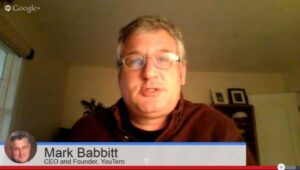
Tech Recruiting: Skilling Up to Fill the Middle #TChat Recap
What does it take to meet top tech talent on today’s terms? Kevin Grossman weighs in after Dice exchanges insights with the #TChat crowd

What does it take to meet top tech talent on today’s terms? Kevin Grossman weighs in after Dice exchanges insights with the #TChat crowd

As technology grows more integral to daily life, demand for tech-savvy talent is relentless. How can employers hire the best?

What really makes “great” employers special? And can how can companies make “great” magic last? #TChat lessons learned

What sets great employers apart? And what can other organizations learn from the best? Join a timely and important #TChat conversation this week

Remote work is on a roll. But it takes more than home offices and an internet connection to succeed. What really matters? The TalentCulture community weighs in

How can leaders revitalize business cultures? Symbols may not seem essential, but let’s take a closer look

Telecommuting success isn’t a slam dunk — but the business benefits can be significant. What should employers consider?

Is your company overdue for a culture makeover? How can leaders diagnose their organization’s health and drive successful change?

What’s ahead in talent management for 2014? Exciting times for social media and employer brand strategy!

It’s a very merry #TChatHoliday! See Tim McDonald and Kevin Grossman compare end-of-year notes in a brief hangout — and then share your own thoughts!

What does it take to be a leader others actually want to follow? Here are 5 ways any aspiring leader can move in the right direction

What happens when nearly 50,000 job seekers speak out about their candidate experience? Great insights surface! Let’s discuss at #TChat events

Hiring the right talent can be a challenge. But sometimes you get much more than you bargained for — and it’s like striking gold…

How can one person successfully juggle multiple HR responsibilities? Suggestions from a professional who has made it work

There are many paths in the world of work. But one thing is for sure — with community along for the ride, it’s never lonely!

You don’t know you need outplacement until you really need it. However, it’s never too soon to pick a provider — here’s why.

Social media is redefining influence in all respects. What does this mean for employer and personal brands? Let’s talk about it…

Is mobile recruiting here to stay? How can employers make the most of this opportunity? Highlights from our community events

Business leaders who truly want to engage employees look beyond the obvious. Meghan M. Biro outlines 5 core questions companies should answer

Mobile devices are fast becoming the standard for connectivity in today’s work world. But what does that really mean for HR processes like hiring? Let’s talk…

When you’re filling open positions, it’s wise to pay attention to all job seekers — even if they aren’t a fit. Here are 4 reasons why — and tips to help

The world of work is growing more complex and interesting all the time. Who are tomorrow’s leaders and how can they prepare today? Our community speaks…

What makes an effective leader? Dan Newman, author of “The Millennial CEO,” helps us take a closer look…

Just when we thought we “got” employee engagement — there’s more to learn! Take a peek at highlights from the #TChat LIVE panel in Las Vegas

Is Gen X really the “forgotten generation”? If so, what does that mean as the next wave of leaders must step in to lead the world of work?